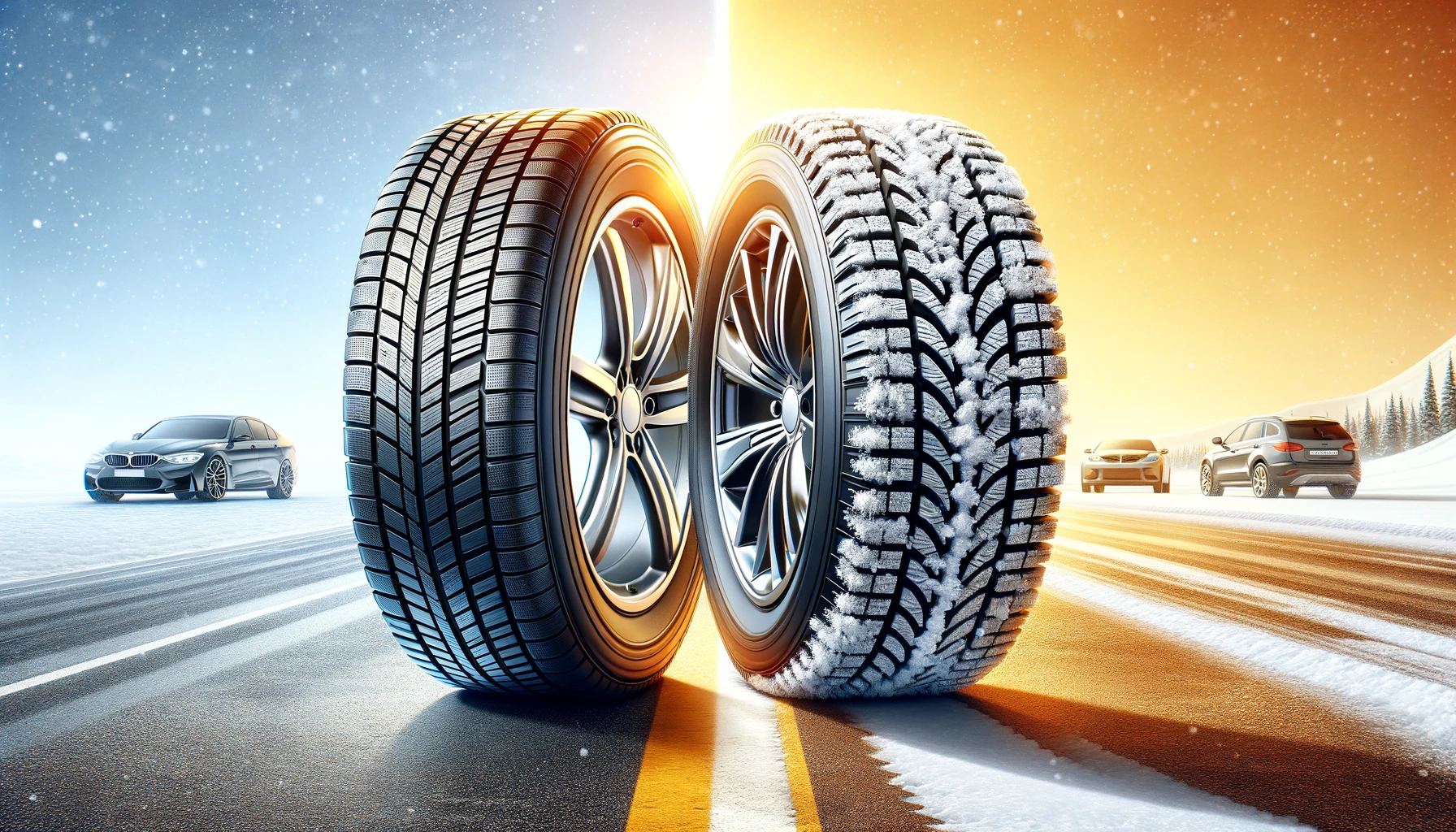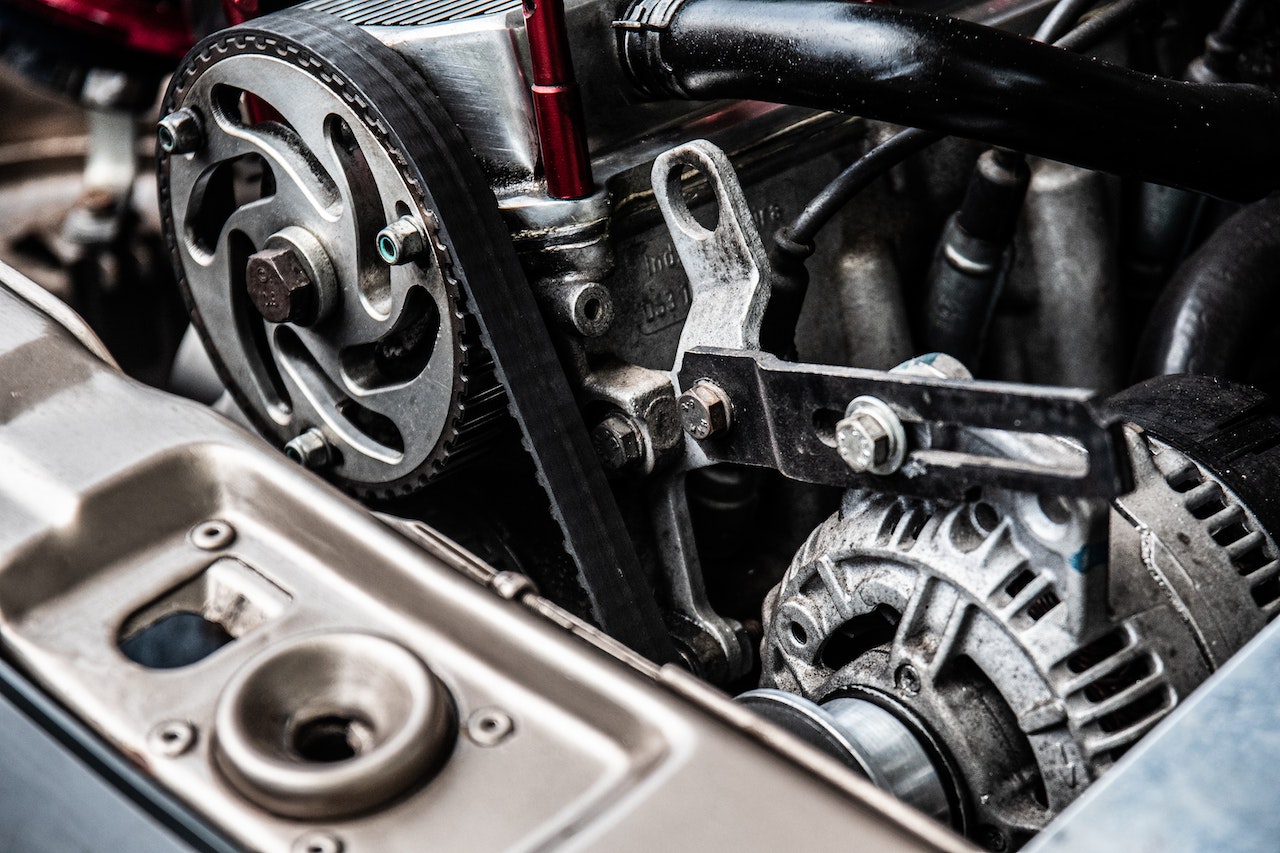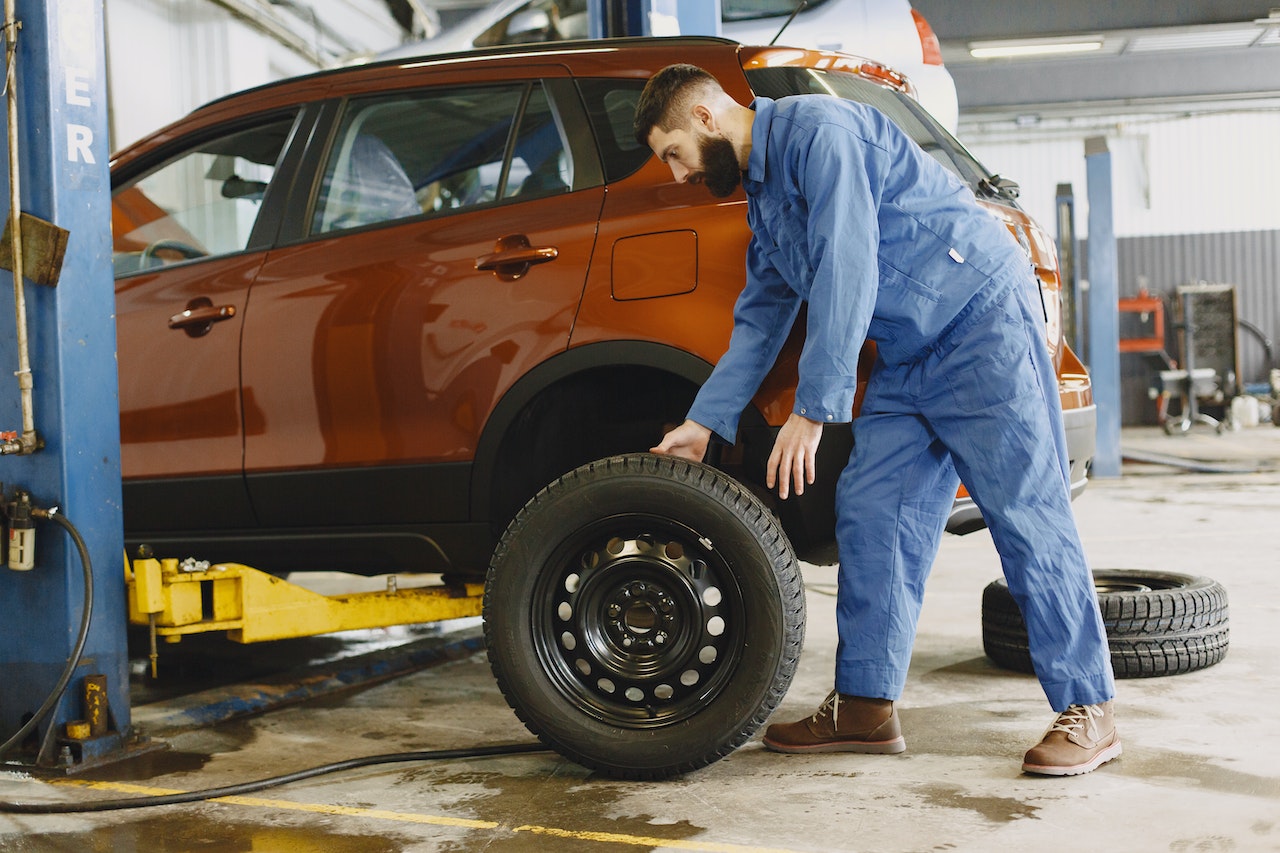Tires. Those round, rubbery things under your car that you probably only think about when you’re skidding across an icy road or burning rubber in the summer sun. Let’s dive into the mystifying world of summer and winter tires, because who doesn’t want to spend their day talking about tires?
The Summer Tire Saga – Not Just for Show-offs
First up, summer tires, also affectionately known as ‘fair-weather friends’. These tires are like the fashionistas of the tire world. They strut their stuff when the sun is shining and the roads are as dry as your neighbor’s sense of humor. But what makes them special?
- Material Matters: Summer tires are made of a softer rubber compound. This is great for warm weather because it’s like having sneakers with a really good grip. You wouldn’t play basketball in your dress shoes, right? Same principle – except, hopefully, you’re not doing slam dunks with your car.
- Tread Lightly: The tread pattern on these tires is shallower and simpler. It’s not just a design choice to make your tires look cool; it’s actually functional. This design helps in reducing hydroplaning and ensures better contact with the road. Yes, contact with the road – pretty crucial unless you’re planning to audition for the next Fast and Furious.
- Performance Perks: If you enjoy a spirited driving experience (legal disclaimer: always observe speed limits), summer tires are your best buds. They offer superior road grip, cornering, and braking capabilities in warm conditions. Essentially, they’re the superhero tires in your summer blockbuster.
Winter Tires – Not Just For Arctic Expeditions
Moving on to winter tires, or as I like to call them, ‘the unsung heroes of the tire world’. These guys step up their game when temperatures drop faster than your will to go to work on a Monday morning.
- Rubber Revolution: Winter tires are made of a rubber compound that doesn’t harden in cold temperatures. Think of them as the all-weather boots of the tire world. They stay flexible to grip the road better than a cat on a curtain.
- Tread Deeply: These tires have deeper treads and unique patterns. Why? Because snow, my dear friend, snow. These treads are like the tire equivalent of snowshoes, helping you trudge through wintry wonderlands without reenacting a scene from Ice Age.
- Biting Edge: Winter tires also have something called ‘sipes’ – tiny slits in the tread. These sipes are like the secret agents of the tire world, providing extra edges to bite into ice and snow. Without them, you might as well be driving on hockey pucks.
The Great Swap – When to Ditch Your Summer Flings for Winter Buddies
Now that we know what makes these tires tick, let’s talk about timing. Because, let’s be honest, timing is everything – just ask anyone who’s ever told a joke at the wrong time.
- Summer Tire Time: As a general rule of thumb, when temperatures consistently hit above 45°F (7°C), it’s time to bring out your summer tires. They thrive in warm weather like a teenager at a pool party. Just remember, they’re not great in the cold. Like that same teenager at a pool party, but in December.
- Winter Tire Wonderland: On the flip side, when the thermometer starts to drop below 45°F (7°C), it’s time to switch to winter tires. They’re like the friend who’s always ready for a snowball fight. Using winter tires in summer, though? That’s like wearing a parka to the beach – not a good look, and pretty ineffective.
All-Season Tires – The Jack of All Trades, Master of None
And then, there’s the all-season tire, the Switzerland of tires – neutral. They’re like the person who says, “I don’t mind, whatever you want to eat,” for every meal.
- Compromise Central: All-season tires are a compromise between summer and winter tires. They work okay in many conditions, but they’re not the best in extreme weather. They’re like wearing sneakers year-round. Fine most of the time, but not ideal for running a marathon or trekking through a blizzard.
- Tread and Temperatures: Their tread pattern falls somewhere between the summer and winter tire designs. It’s like having a friend who’s good at many things but hasn’t quite figured out their life yet. Jack of all trades, master of none.
The Cost of Being Unprepared – A Cautionary Tale
Let’s talk money and safety, because, frankly, that’s what it boils down to.
- Safety First: Using the wrong tires for the season isn’t just a fashion faux pas; it’s a safety hazard. Imagine wearing flip-flops on an icy sidewalk. That’s your car with summer tires in winter.
- Economic Efficiency: Yes, buying two sets of tires sounds expensive. But think of it as an investment in not crashing your car – which is, you know, generally more expensive. Plus, each set lasts longer when used only half the year. It’s like having two pairs of shoes; they wear out less quickly than just one.
Conclusion: Embrace the Seasonal Tire Tango
In conclusion, summer and winter tires are as different as beach volleyball and ice hockey. One thrives in the heat; the other excels in the cold. Using the right tires at the right time not only ensures your safety but also enhances your driving experience. So, embrace the seasonal tire swap. Your car, and possibly your insurance agent, will thank you.
And remember, in the world of tires, just like in life, the right choice at the right time makes all the difference. Stay safe, stay smart, and maybe, just for fun, stay a little sarcastic. Happy driving!
Pro Tips: The Tire Truths You Didn’t Know You Needed
- Check the Pressure: Tire pressure isn’t just a number your mechanic throws at you to sound smart. It’s crucial. Check your tire pressure monthly. Incorrect pressure can lead to reduced grip, increased wear, and even tire blowouts – which are as fun as they sound.
- The Penny Test: Want a quick way to check tire tread depth? Insert a penny into the tread with Lincoln’s head facing down. If you can see all of Abe’s head, it’s time for new tires. Congratulations, you just used a penny for something useful in the 21st century.
- Rotation Is Key: Rotate your tires regularly. This means moving them from one position to another, ensuring even wear. It’s like swapping your couch cushions to avoid that one permanently squished spot.
- Age Matters: Tires aren’t wine; they don’t get better with age. Even if they look fine, the rubber degrades over time. Most manufacturers recommend replacing tires every six years, regardless of tread depth. Don’t be that person with a garage-aged ‘vintage’ tire collection.
- Storage Savvy: When storing your off-season tires, keep them in a cool, dry place away from direct sunlight. If possible, store them upright and not stacked. It’s like giving your tires a nice little vacation until their season comes around again.
- Know the Signs: Be aware of the signs of tire wear or damage – like cracks, bulges, or vibrations. Ignoring these can be as bad as ignoring your mother-in-law’s phone calls. Eventually, it’ll catch up to you, and it won’t be pleasant.
- Alignment and Balancing: Regularly check your wheel alignment and balance. Poor alignment leads to uneven wear, and unbalanced tires can cause vibrations, making your driving experience feel like a budget massage chair.
- Read the Fine Print: Understand the tire warranty. It’s like reading the terms and conditions – boring, yes, but you might be surprised at what’s covered (or not).
- Speed Rating is Not a Challenge: Your tire’s speed rating isn’t a dare. It’s a safety feature indicating the maximum safe speed. Treat it like the expiration date on milk – respect it unless you enjoy risky business.
- Don’t Mix and Match: Avoid mixing tire types on your vehicle. It’s like wearing one sandal and one boot – confusing and not effective.
FAQs: Tires, Tires, and More Tires
Sure, you can, just like you can wear a raincoat in a blizzard or shorts in a hailstorm. All-season tires work okay in many conditions, but they’re not the best choice for extreme weather. Think of them as the sneakers of the tire world – good for a lot, but not great for the extremes.
Using only two winter tires is like wearing one snow boot and one flip-flop. Sure, you’ll have some traction, but your car’s balance will be all off, making handling unpredictable. It’s a full set or nothing – safety first!
A good rule of thumb is the 45°F (7°C) mark. When temperatures consistently drop below this, it’s time to switch to winter tires. It’s like switching from iced coffee to hot coffee – a seasonal ritual.
This depends on how you drive, how often, and how well you maintain them. On average, a set can last anywhere from 3 to 6 years. But remember, driving style matters – if you treat every green light like the start of a race, expect less.
You could, but it’s not a great idea. It’s like wearing a heavy winter coat in summer – uncomfortable and unnecessary. Winter tires wear down faster in warm conditions and don’t offer the best performance on dry roads.
Besides regular checks for pressure, tread depth, and damage, store your off-season tires properly – in a cool, dry place, away from direct sunlight. Think of it as putting your tires into hibernation.
Absolutely. Using the right tires for each season extends the life of both sets, meaning fewer replacements over time. It’s like having two pairs of shoes for different occasions – they both last longer.
No, winter tires are designed for all cold conditions, including dry cold roads. They offer better grip and handling in all winter scenarios, not just when it’s snowing. Think of them as your all-around winter warrior.
Yes, they do. Summer tires offer better grip, handling, and braking in warm weather, especially in wet conditions. It’s the difference between wearing running shoes or dress shoes for a sprint – the right equipment matters.
Imagine always walking with a limp on the same leg. Eventually, your shoes would wear out unevenly. Tire rotation is like switching legs – it ensures even wear and prolongs the life of your tires.



